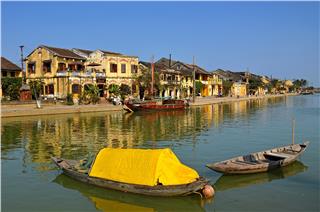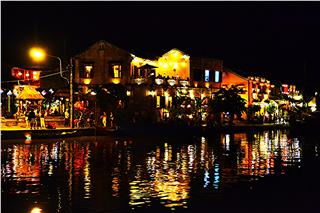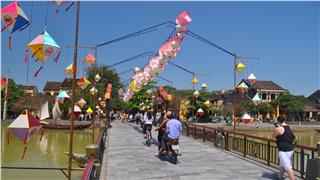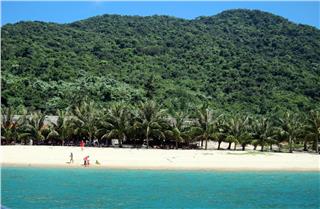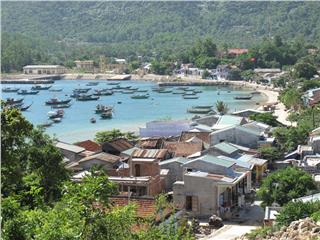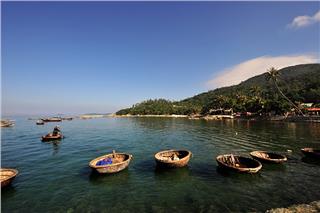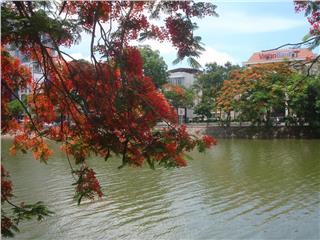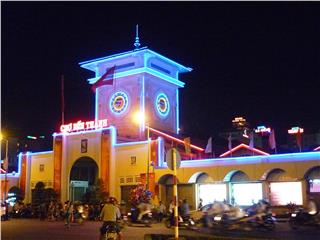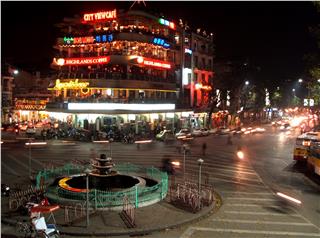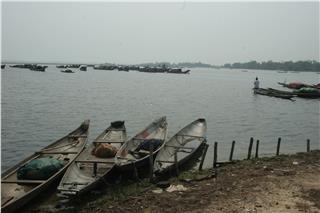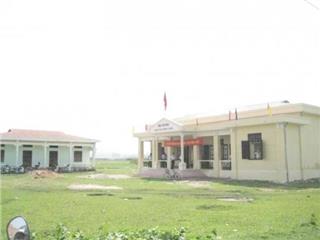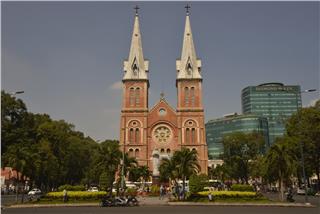Ancientness of Hoi An ancient town
Fri, 09 Jan 2015 . Last updated Mon, 01 Jun 2015 14:17
-
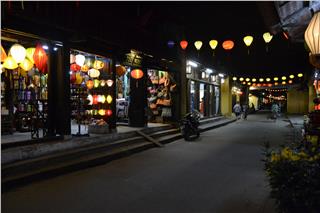 Hoi An travel to New Moon Festival 7230 viewed
Hoi An travel to New Moon Festival 7230 viewed -
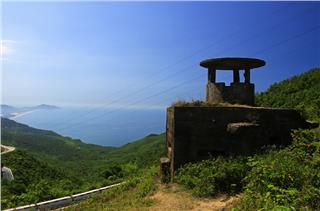 Vietnam War bunker near Da Nang 6704 viewed
Vietnam War bunker near Da Nang 6704 viewed -
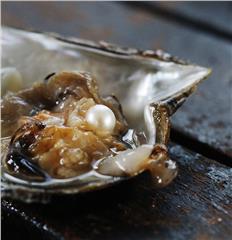 Discovering pearl in Phu Quoc Island 6122 viewed
Discovering pearl in Phu Quoc Island 6122 viewed -
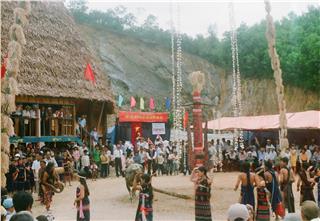 Discovering the Co Tu village in Quang Nam 5978 viewed
Discovering the Co Tu village in Quang Nam 5978 viewed -
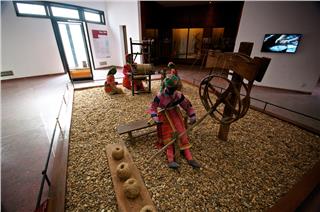 Cultural identity of ethnic groups in Vietnam Museum of Ethnology 5940 viewed
Cultural identity of ethnic groups in Vietnam Museum of Ethnology 5940 viewed -
 Visit Trang An complex in Ninh Binh 5842 viewed
Visit Trang An complex in Ninh Binh 5842 viewed -
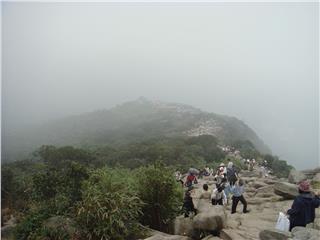 Yen Tu Pagoda and records of Vietnam 5809 viewed
Yen Tu Pagoda and records of Vietnam 5809 viewed -
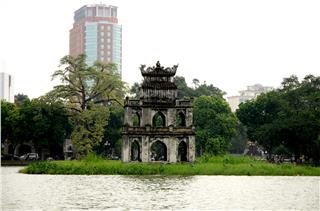 Hanoi Vietnam to Hoan Kiem Lake 5683 viewed
Hanoi Vietnam to Hoan Kiem Lake 5683 viewed -
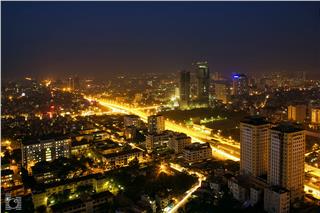 Hanoi at night 5581 viewed
Hanoi at night 5581 viewed
With the ancient beauty, charming beaches, perfect services and friendly people, Hoi An has become one of three cultural heritages of Vietnam and the most favorite destinations in Vietnam – a paradise for tourists.
Hoi An ancient town is located downstream the Thu Bon river, in the coastal area of Quang Nam, about 30km to the south of Da Nang city. Hoi An used to be known as Lam Ap and Hoai Pho. Thanks to favorable geographical location and weather, Hoi An used to be a hectic international port where Japanese, Chinese and Western merchant ships docked during the 17th and 18th century. Prior to this period, there were many vestiges of the port of Thi Nai (Champa) that was mentioned a lot when it comes to the Sea Silk Route.
In the 19th century Cua Dai estuary was narrowed, while the Co Co River was covered with silt, blocking the way to Hoi An port of large ships. Since then, Hoi An lost the role of an important international port. Through many historical ups and downs, Hoi An Ancient Town has kept architecture almost intact and survive mass urbanization at the end of the 20th century. Apart from cultural values reflected by architectural buildings, Hoi An has kept a vibrant culture with a lot of intangible heritages. Everything in the ancient town, from daily life of the locals to traditions, customs and religious practices has been preserved and promoted well. That’s why Hoi An is dubbed as a living museum of architecture and way if city life.
As the only traditional port typical of Southeast Asia in Vietnam, Hoi An has preserved many architectural buildings such as houses, assembly halls, communal houses, pagodas, temples, streets, etc. Most of buildings here were built of traditional architecture, dating from the 17th and 19th century, along narrow streets. They are the evidence for the establishment, development and decline of this ancient town. On the journey back to the most brilliant time of Hoi An port in the past, we cannot but visit Chua Cau which is a roofed bridge in the 16th century by Japanese traders. Thus, it is called Japanese bridge or “Lai Van Kieu” (bridge of friends from the far away land).
Chua Cau has special architecture and is one of the “must-see” attractions in Hoi An. The whole bridge is roofed with yin-yang tiles. At the center of the bridge is the altar of Bac De Tran Vo (the storm and typhoon God) who protects the land and blesses human happiness. At the both ends of the bridge are placed a stone dog and a stone monkey, the two animals that Japanese people have long worshipped. Legend has it that Vietnamese, Japanese and Chinese people in Hoi An thought there was only reason for earthquakes in the countries: a sea monster whose head was in India, body in Vietnam and tail in Japan.
When the monster whisked its body, these lands suffered from quakes and floods. Thus, they built a bridge to connect the two banks of the river and control the sea monster for a peaceful life. So it can be said that the bridge is more than a symbol of Hoi An. It is the best evidence for trade exchange between Hoi An people and Japanese and Chinese people in the previous centuries. When it comes to Hoi An, we cannot but mention the assembly halls of Chinese in this ancient town. Chinese people came to Hoi An to live and do business very early, about in the 17th century. They set up trade guilds and lived and did business harmoniously with the locals and people from other countries.
When living in this ancient town, they have built many remarkable architectural buildings, such as ancestral worshipping houses, temples and assembly halls. And the assembly halls are the most typical buildings in terms of architecture and using purposes. The assembly halls were designed for activities of fellow-countryman associations, dedicated to guardian gods and celebrities of the preceding generation. Five assembly halls of Chinese people in Hoi An have been kept in good condition. The ancient town stands out with houses with typical appearance where the locals live and practice their traditional crafts.
These houses are special because they have a narrow front and are pretty deep, making a pretty slim house that connects the two parallel streets together. Such houses are very good for business activities. The roof is remarkable with yin-yang tiles, i.e. a row of tiles placed with their face down. The rows of tiles create lines on the sloped roof. Yin – yang tiles are part of the mixed Chinese and Vietnamese architecture. Basically, a house in Hoi An consist of three main compartments with certain purposes: for business activities, living activities and worshiping activities. The compartments are arranged lengthwise.
A house is used for many purposes at the same time. It is built in harmony with the surrounding landscape. This is a typical feature of Southeast Asian architecture. Tan Ky ancient house is one of the noticeable ancient house in Hoi An. The house is located at No.101 Nguyen Thai Hoc Street. On the main entrance door is a pair of eyes in the shape of the yin-yang circle. Like human eyes, the eyes of the house leave the very first impression on visitors and carry the owner’s wishes of prosperity and happiness. So far 7 generations of a family have lived in this house. Tan Ky ancient house has many vestiges that are the evidence for the most brilliant time of Hoi An when trade activities with foreign partners flourished and rich traders built luxury houses.
Despite changes made by the time and floods, the house remains almost intact because it was built from good materials. Wooden pillars create the frame of the house which supports the roof, eases the pressure on all the walls of the house. We can see elements of the Japanese architecture, such as the “chong ruong gia thu” style, i.e. beams piled up into the shape of a hand with five fingers. Curved beams consolidate the house. The frame to support the eaves of the house is carved with images of carp. As for Chinese people, carp is the symbol of good luck.
As for Japanese people, it means power. And Vietnamese people see it as the symbol of prosperity. This 200-year-old house has a system of rafters that divide its compartments lengthwise, a typical feature of Vietnamese ancient architecture. Like many other ancient houses, Tan Ky has two fronts: one is used for trade activities, and the other facing the river is the place where goods are exchanged.
Tourists can find interesting features of Chinese sculpture through carvings of bat and pomegranate, for example, the symbol of good things. Decoration items inside the house are mainly made of wood and carved elaborately, reflecting the well-off life of the house owners of different generations. Plus, Tan Ky ancient house still keeps a pair of parallel sentences: A row of willows several hundreds of meters long can stop remote rain. A piece of the moon 10 sq cm can light up a room full of books. In terms of sculpture, remarkably, these Han characters create 100 birds that are going to fly into the sky.
Here comes another ancient house that bears typical features of Hoi An architecture. It’s Duc An ancient house, at No. 129 Tran Phu Street. Stepping into the 180-year-old house, we can see ancientness from very simple utensils of the house owners. Despite paces of modern life, scenes of daily activities in the past seem to be revived through the furniture and utensils that have been kept intact up to now. That’s why visitors can easily recognize how precious the ancient beauty of things in the house is.
And perhaps this beauty has become part of memories of the old days. Despite yearly floods and restorations, time-honored cultural values of Duc An ancient house have been kept nearly intact. The living room plays a very important role in an ancient house. Here the owners of the house place a set of sofa and hang many horizontal lacquered boards, pairs of parallel sentences, and sets of four pictures. The solemn arrangement in the living room as such shows the depth of the owners’ soul and their appreciation of fine values of Vietnamese culture.
The altar is well placed to show respect of the succeeding generation toward the ancestors. Apart from ancestral worship, Hoi An people worship Quan Cong. In their house, the altar of Quan Cong is placed at the highest position. Hoi An people have long worshipped Quan Cong as the guardian god who brings safety and peacefulness to their family. Perhaps this ritual practice started when Chinese people came to Hoi An.
Especially, slim houses in Hoi An always put aside a yard inside for pond rockery bonsai, etc…, to welcome the sunlight and create the green space. That’s why their houses always have the fresh air, arouse free felling and bring man and mature closer together. This is the solution for ventilation and lighting in slim houses. This is also a strong point of houses in the ancient town to adapt to local weather. Apart from Tan Ky and Duc An, Hoi An ancient town has preserved many other beautiful ancient house, such as Phung Hung and Quan Thang.
Each house is an architectural masterpiece featuring Vietnamese traditional art and cultural interactions with China and Japan. Rafters of Vietnamese traditional architecture are arranged in “chong ruong gia thu” style from Japan and decorated with Chinese motifs. Such clever combinations leave a strong imprint and honor long-established values of Hoi An old town today and Hoi An trading port in the past.
When it comes to Hoi An ancient town, we cannot resist the charm of ancient architectural buildings, remarkably the ancient houses. As time goes by, utensils in the houses have been preserved and handed down from generation to generation. In such houses, we don’t see modern utensils. It’s possibly because the owners of the houses keep them backstage. As for Duc An ancient house, Phan Ngoc Tram, its owner, plays the role of a tour guide. That’s why ancient houses not only carry time-honored beauty, but also impress visitors with their owner’s determination to preserve these valuable heritages.
Architectural building and cultural activities of Chinese and Japanese traders like Chua Cau, assembly halls and ancient houses, contribute to making Hoi An stand out as today. Going back in time, these ancient houses were shops that buzzed with activities of domestic and foreign traders, creating a busy trading port. Today, the ancient houses are no longer used for business purposes because they become tourist sites revitalizing Hoi An economy. Through many ups and downs, Hoi An Vietnam remains there with vestiges of an ancient port, with ancient beauty and with traces of time.
Source: VTC10 - NETVIET
- Tags:
- hoi an
- Hoi An Ancient Town
- Hoi An Old Town
- Hoi An Vietnam
- Hoi An attractions
- attraction in Hoi An

